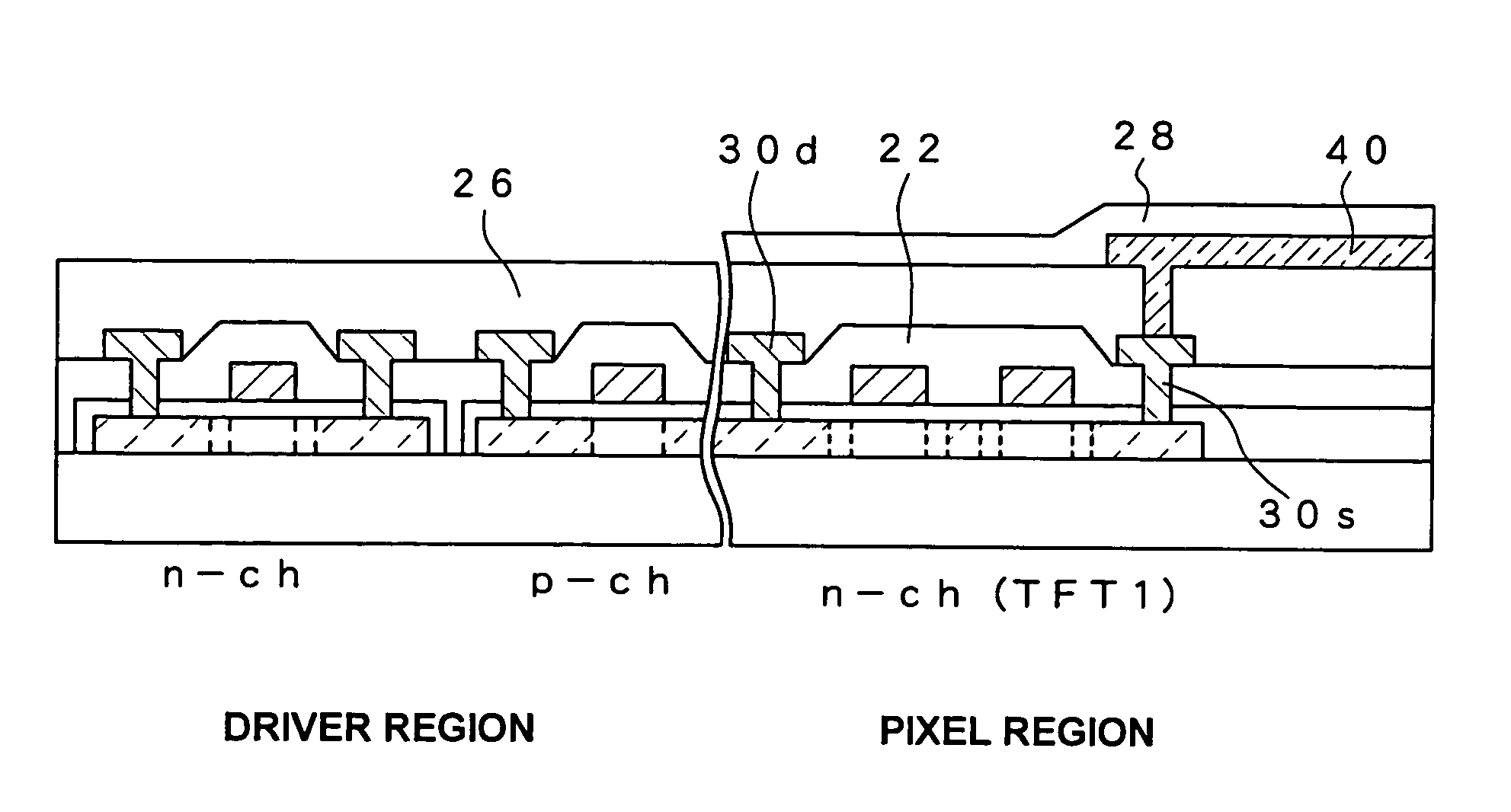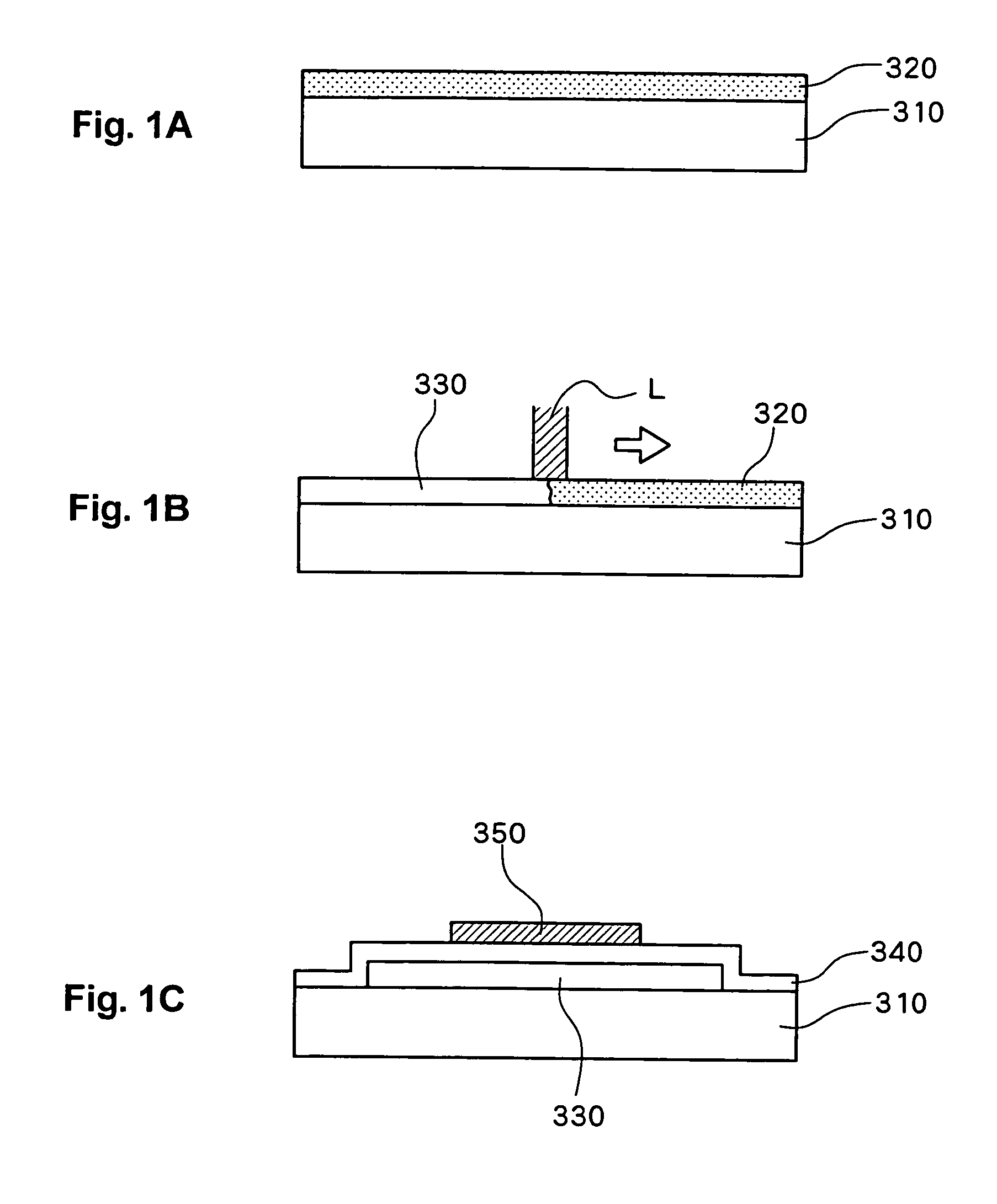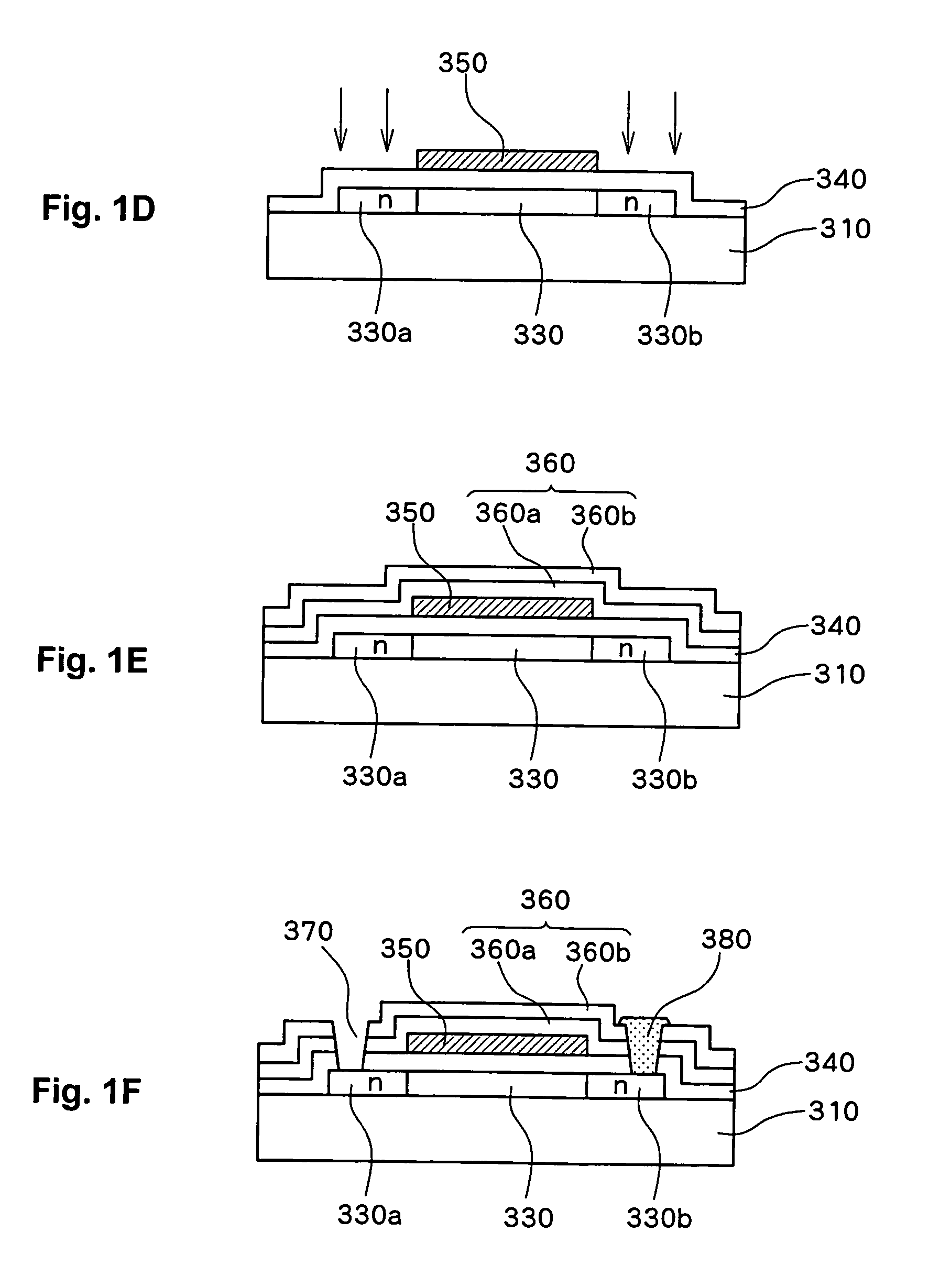Thin film transistor and active matrix type display unit production methods therefor
- Summary
- Abstract
- Description
- Claims
- Application Information
AI Technical Summary
Benefits of technology
Problems solved by technology
Method used
Image
Examples
first embodiment
[0073]FIGS. 2A–2M, and FIG. 3 illustrate a method of manufacturing an active matrix display device according to a first embodiment of the present invention.
[0074]Step 1 (FIG. 2A): Over the entire surface of an insulating substrate 1 of quartz, non-alkaline glass, or the like, an a-Si film 2 is formed by plasma CVD (chemical vapor deposition) using gas including SH4 (silane), Si2H6 (disilane), or the like.
[0075]Step 2 (FIG. 2B): The surface of the a-Si film 2 is irradiated with a laser beam L for annealing, thereby melting and recrystallizing a-Si to form a poli-Si semiconductor film 3. Because the grain size of poli-Si according to the laser irradiation energy density and the number of times a laser is irradiated, the energy density of the laser beam L is optimized to provide the maximum grain size.
[0076]Step 3 (FIG. 2C): A photoresist film is formed on the semiconductor film 3 for light exposure. The portion of the photoresist film exposed to light is removed, leaving only the port...
second embodiment
[0092]A second embodiment will next be described. FIG. 4 is a cross sectional view of a TFT substrate formed by manufacturing steps according to the second embodiment. The steps up to Step 7 are the same as those in the first embodiment illustrated in FIGS. 2A–2G, and therefore description thereof will not be repeated.
[0093]Step 8: Through photolithography and etching, a second contact hole 9 (9d) is formed penetrating the interlayer insulating film 8 and exposing the first contact 7d.
[0094]Step 9: On the interlayer insulating film 8 and the second contact hole, a metal film in thickness of 3000 Å is formed as a second conductive film by sputtering, to form wiring 13d extending in a direction perpendicular to the plane of the sheet in the second contact hole by photolithography and etching.
[0095]Step 10: The planarization film 26 is formed covering the interlayer insulating film 8 and the wiring 13d.
[0096]Step 11: Through photolithography and etching, a third contact hole is forme...
third embodiment
[0100]A third embodiment, in which the number of first contacts for each TFT is different from those in the above-described first and second embodiments, will next be described. FIGS. 5 and 6 are cross sectional views of the TFT substrate formed by manufacturing steps according to the third embodiment. The manufacturing steps up to Step 4 are the same as those in the first embodiment illustrated in FIGS. 2A–2D, and therefore description thereof will not be repeated.
[0101]Step 5: Through photolithography and etching, only the first contact hole 6s is formed penetrating the gate insulating film 5 and exposing part of the source region 3s illustrated in FIG. 2E.
[0102]Step 6: On the gate insulating film 5 and the first contact hole, a metal film is formed as a first conductive film in thickness of 2000 Å by sputtering. Through photolithography and etching, the gate electrode 7g is formed on the region of the gate insulating film 5 corresponding to and located on the channel region 3ch. ...
PUM
 Login to View More
Login to View More Abstract
Description
Claims
Application Information
 Login to View More
Login to View More - R&D
- Intellectual Property
- Life Sciences
- Materials
- Tech Scout
- Unparalleled Data Quality
- Higher Quality Content
- 60% Fewer Hallucinations
Browse by: Latest US Patents, China's latest patents, Technical Efficacy Thesaurus, Application Domain, Technology Topic, Popular Technical Reports.
© 2025 PatSnap. All rights reserved.Legal|Privacy policy|Modern Slavery Act Transparency Statement|Sitemap|About US| Contact US: help@patsnap.com



